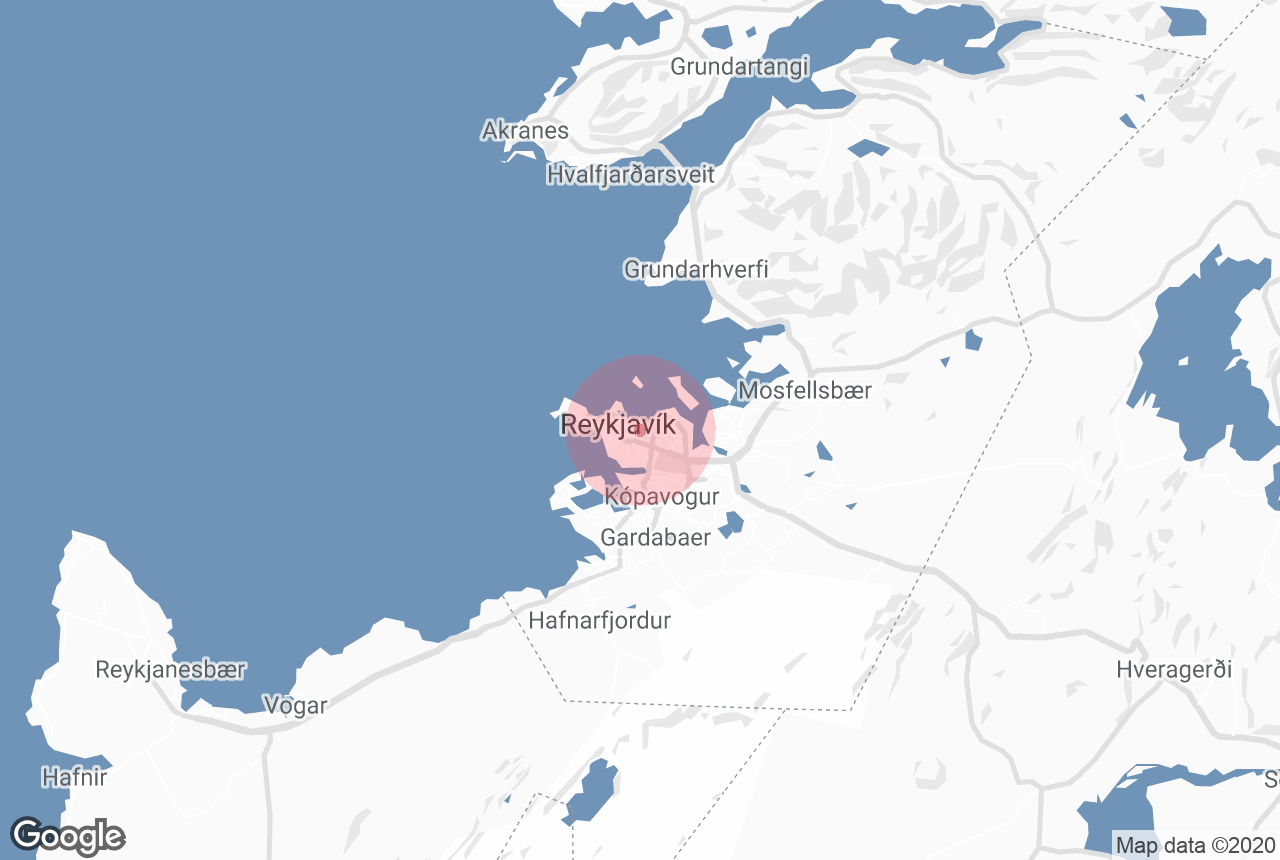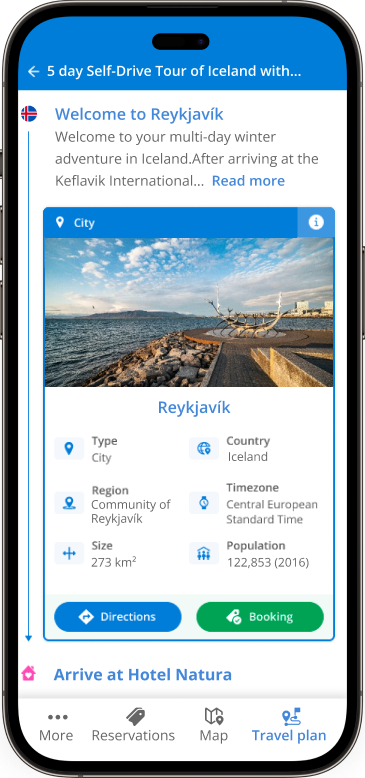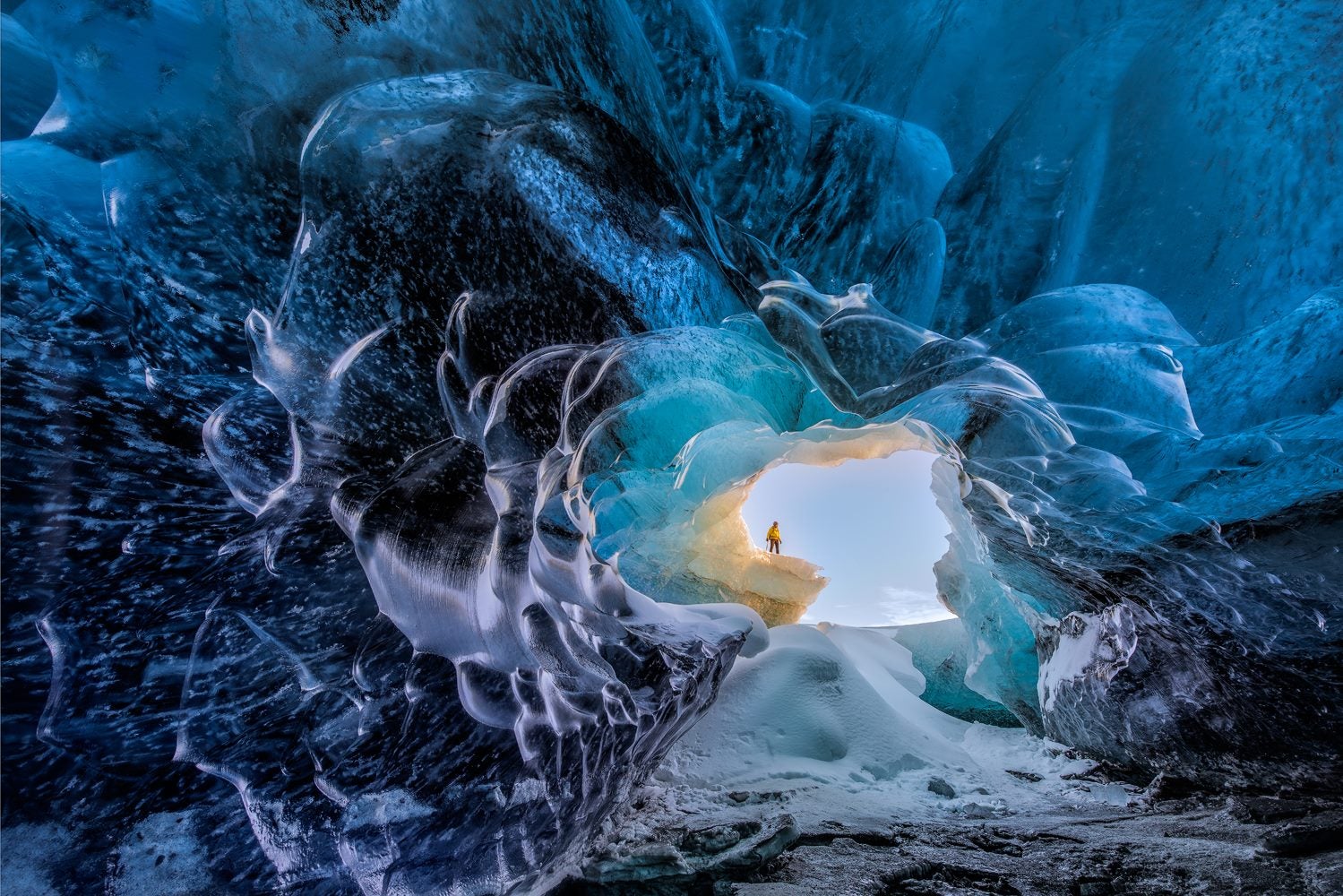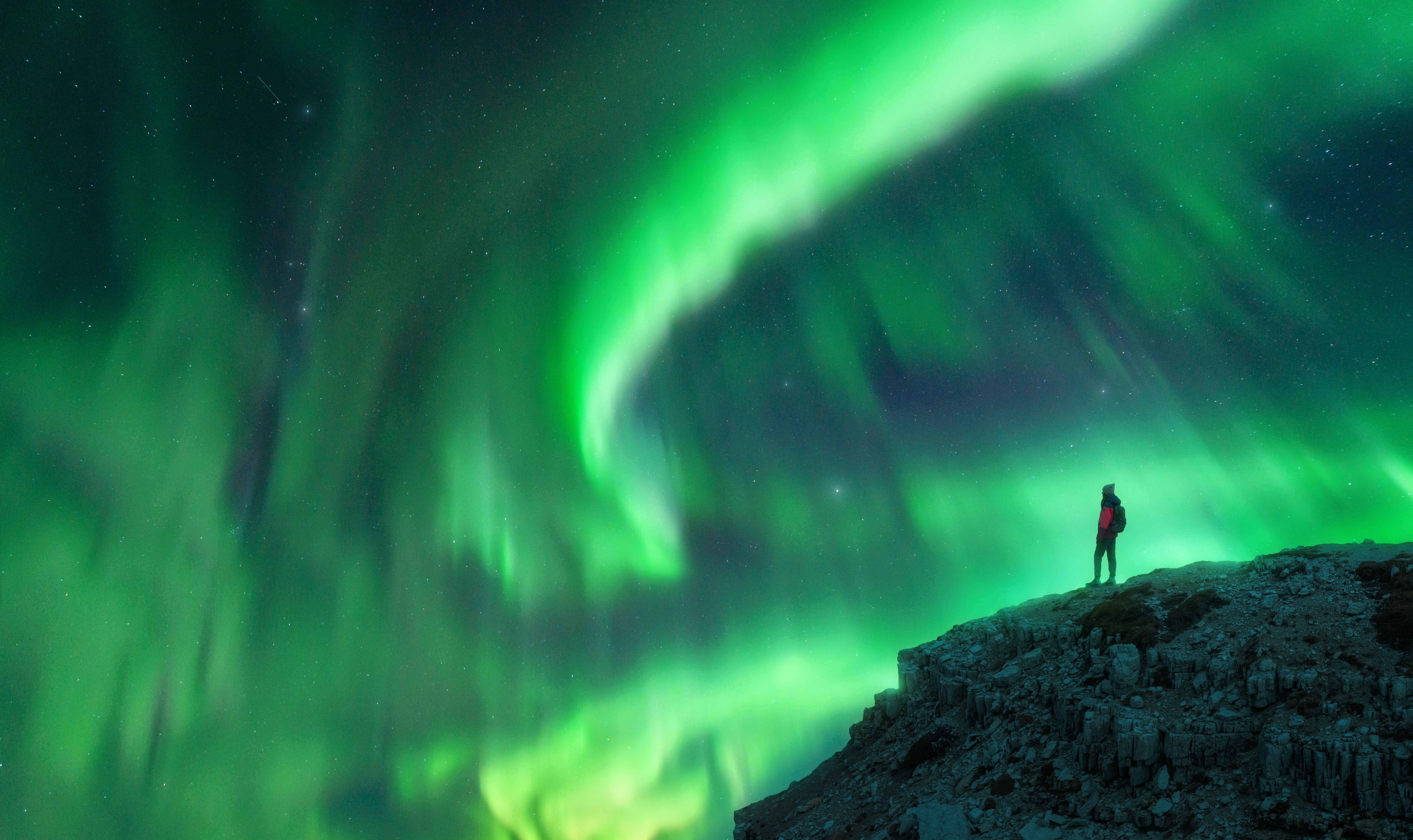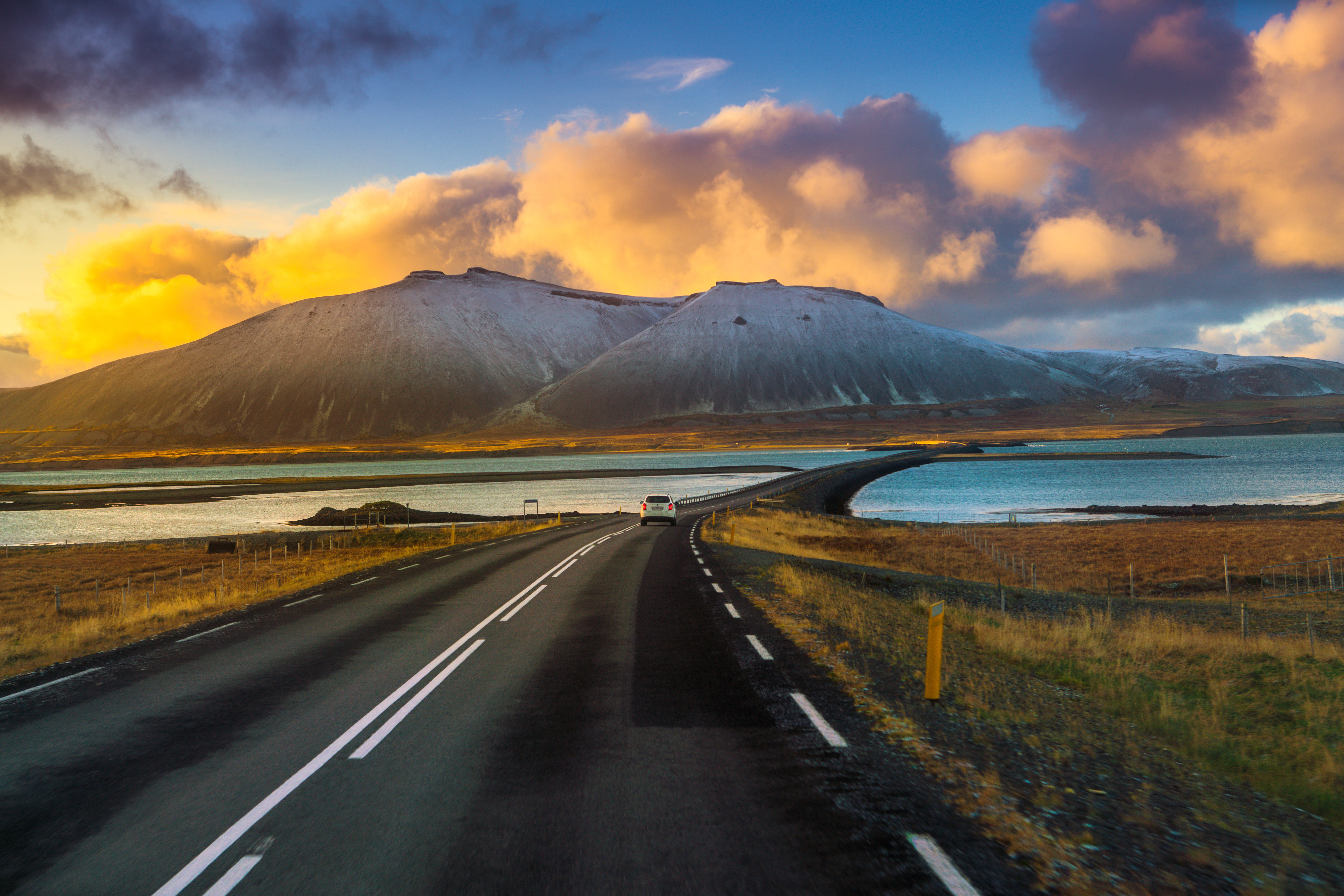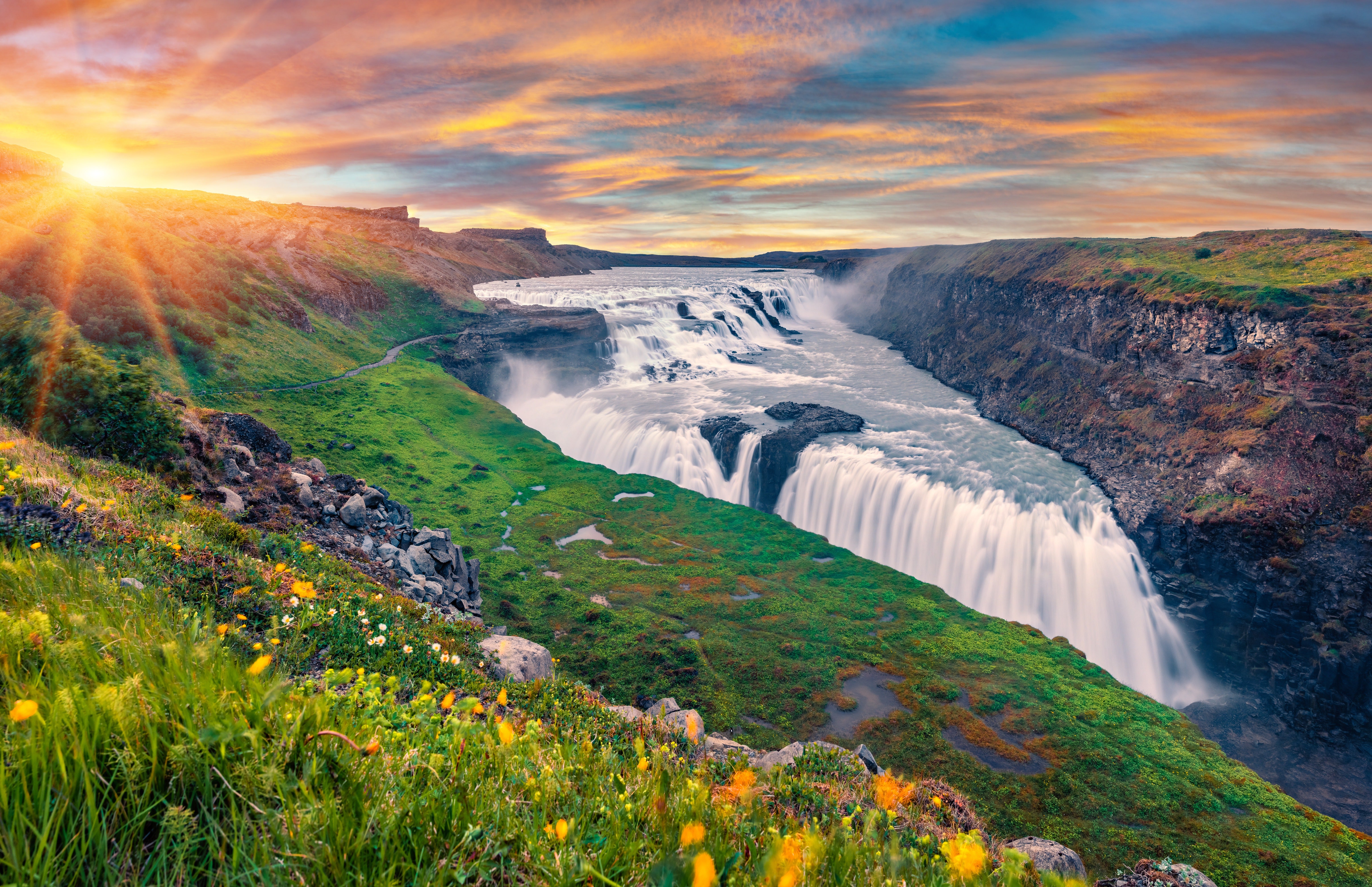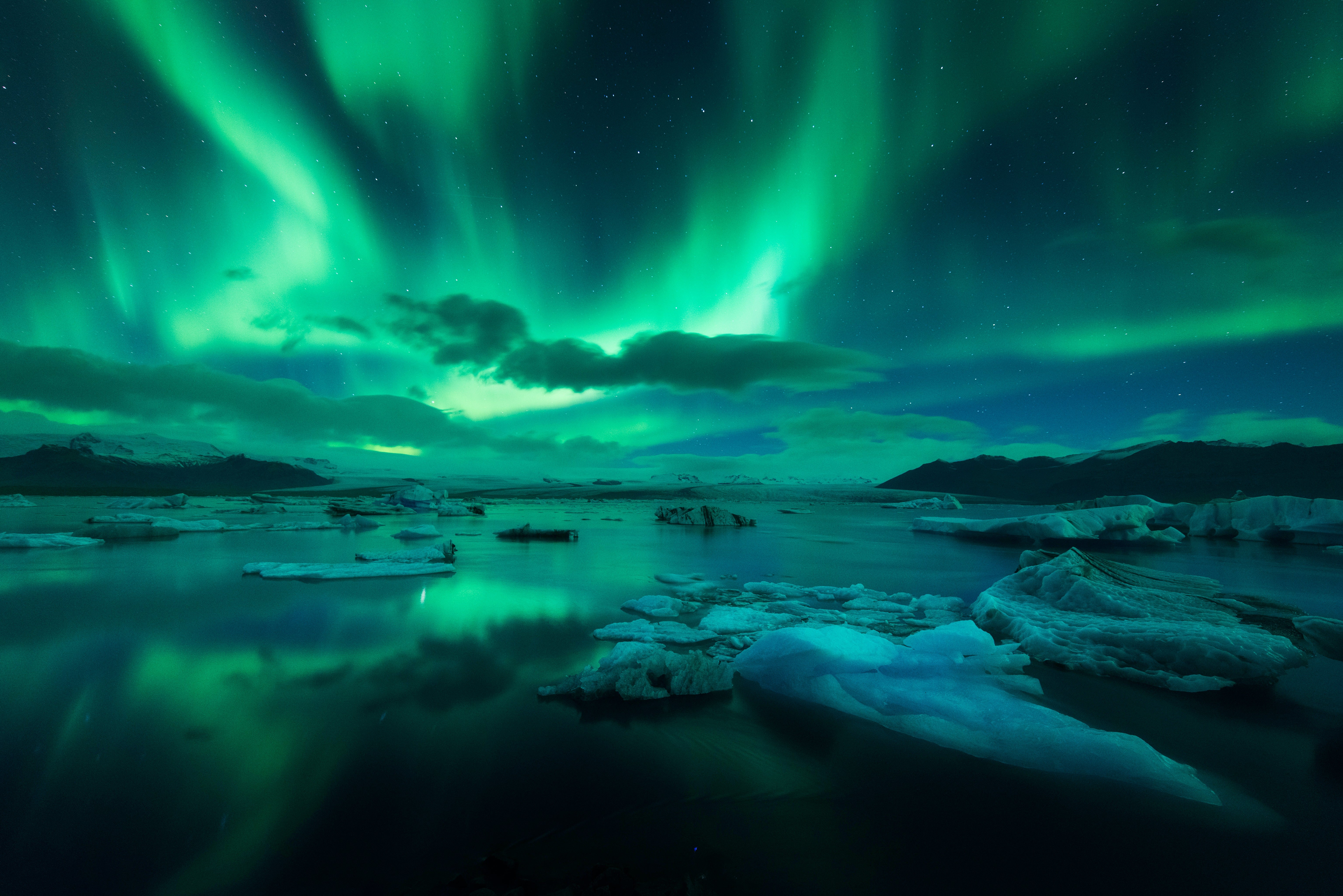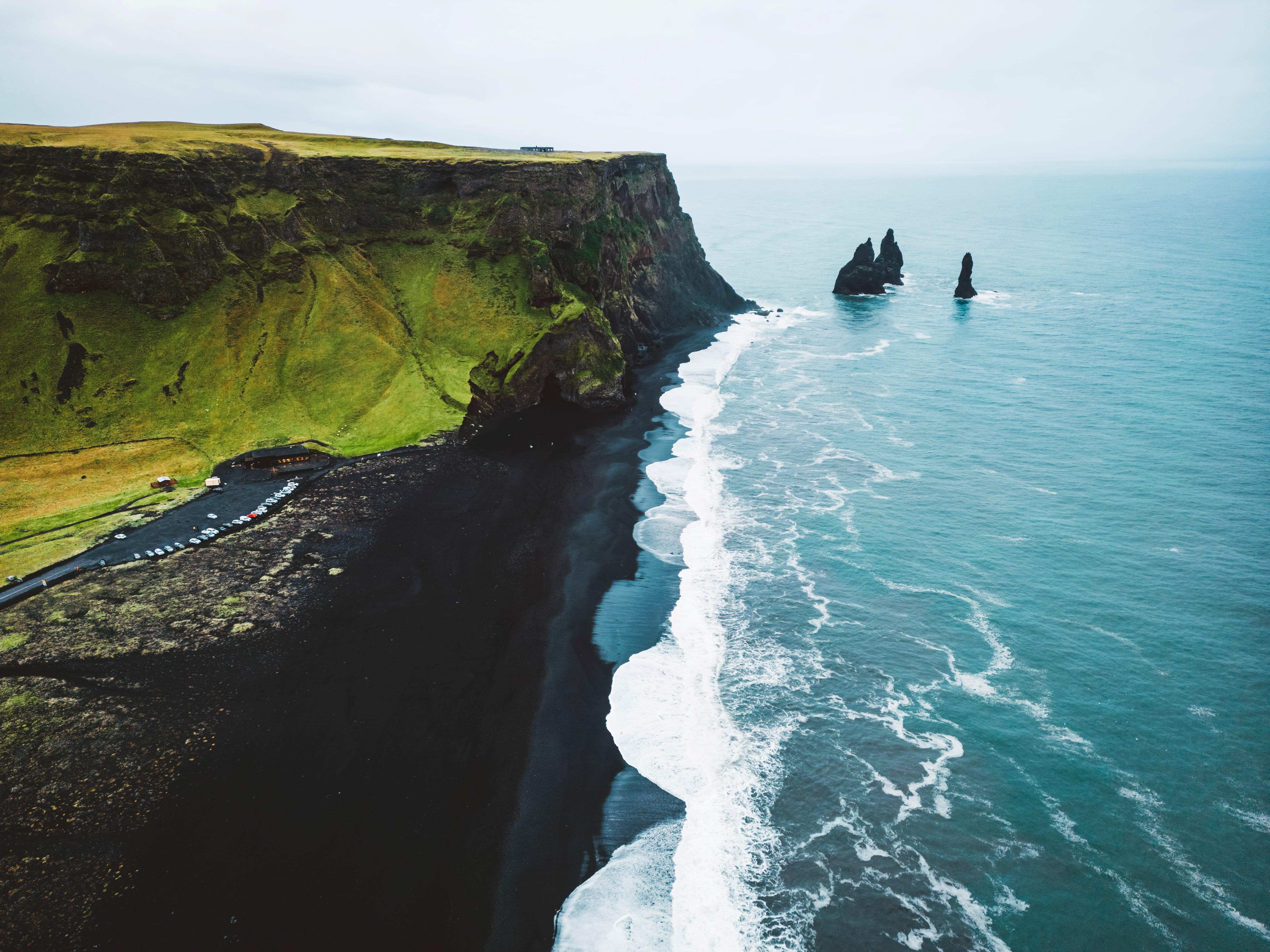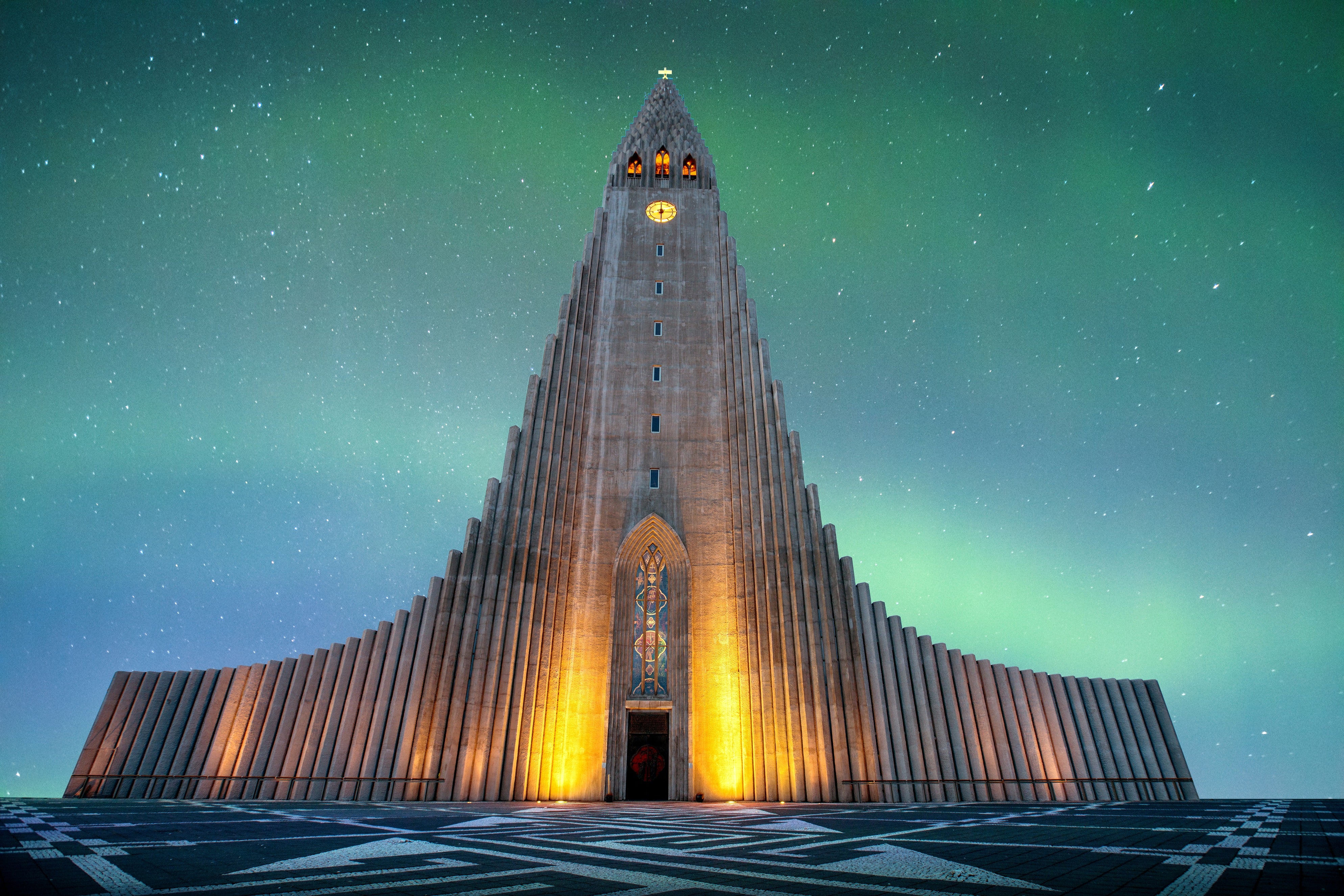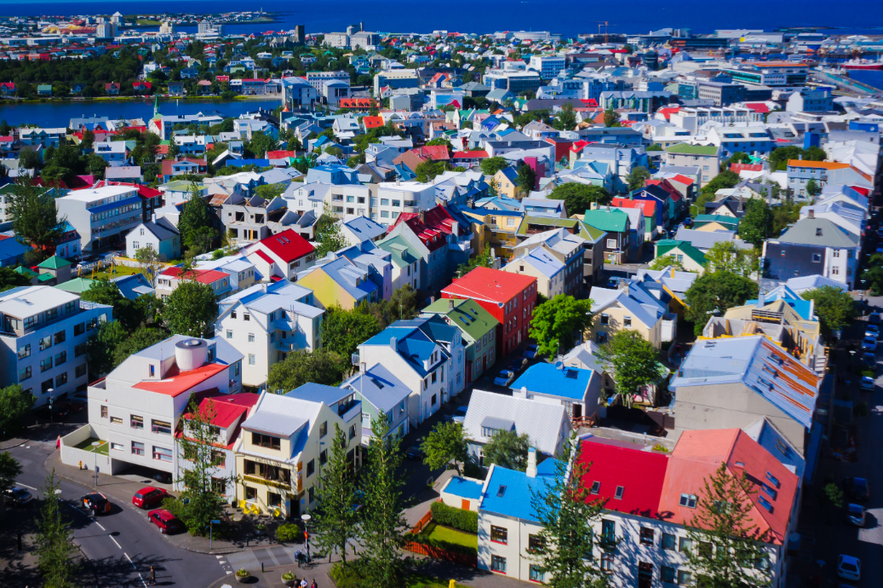
Reykjavik is Iceland’s small but vibrant capital with a culture unlike any on the planet. Keep reading to learn what makes the capital of Iceland unforgettable and discover the top Reykjavik attractions you can’t miss.
With a population of just over 143,000, Reykjavik may be small compared to other capitals, but it has a charm that keeps visitors coming back year after year. The city combines a lively food scene with easy access to Iceland’s natural wonders, along with a wide variety of Reykjavik tours and experiences to fill your days.
Why You Can Trust Our Content
Guide to Iceland is the most trusted travel platform in Iceland, helping millions of visitors each year. All our content is written and reviewed by local experts who are deeply familiar with Iceland. You can count on us for accurate, up-to-date, and trustworthy travel advice.
As the cultural and political heart of the country, Reykjavik is the perfect base for your adventure. You’ll find the biggest selection of Reykjavik hotels and accommodations, from boutique stays in the city center to budget-friendly options and cozy escapes.
Getting here is simple too, with convenient flights to Reykjavik from major cities around the world. Whether you’re planning your Iceland holidays or thinking of renting a car and using the capital as your base, Reykjavik is ready to welcome you.
Ready to go? Let’s dive in.
Things To Know Before You Visit Reykjavik
-
The geography of Reykjavik dates back beyond the last Ice Age and offers travelers a glimpse into the raw power of volcanoes, glaciers, and plate tectonics.
-
A trip to Iceland’s capital allows you to absorb the country’s culture, experience gorgeous landscapes, and have tons of fun.
-
Reykjavik is full of hotels and accommodations that meet the needs of a broad range of travelers.
-
Guided tours from Reykjavik allow you to venture into Iceland’s vast and stunning natural landscapes.
Reykjavik’s Location and Natural Highlights
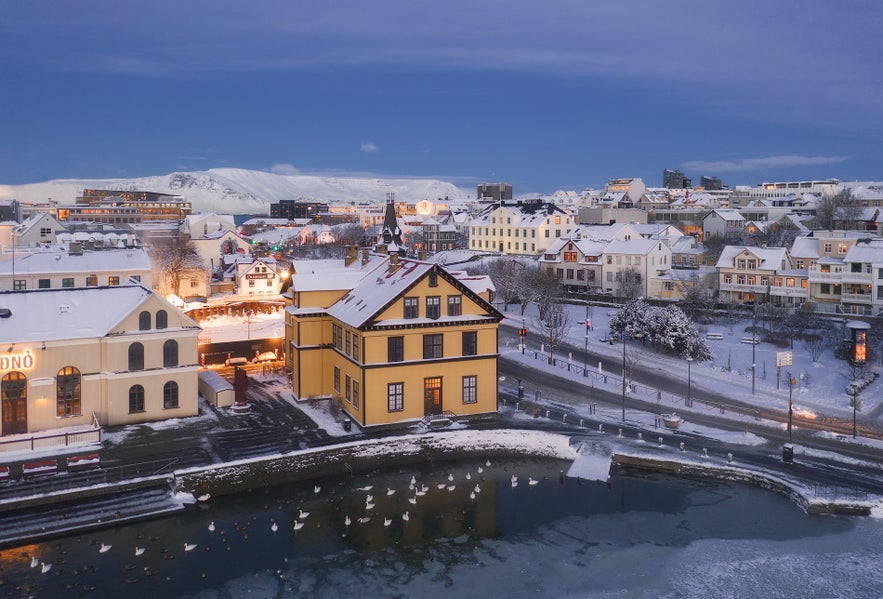 Reykjavik is located in Southwest Iceland on the shores of Faxafloi Bay. Glaciers, earthquakes, and volcanic eruptions have shaped the landscape over thousands of years.
Reykjavik is located in Southwest Iceland on the shores of Faxafloi Bay. Glaciers, earthquakes, and volcanic eruptions have shaped the landscape over thousands of years.
The Reykjavik area is geothermal, which is why it’s so well-known for its rejuvenating hot springs. The Sky Lagoon is a must-see and one of Reykjavik’s (and the country’s) most popular geothermal spas.
Much of the current city area was subglacial during the last Ice Age, with the glacier reaching as far as the Alftanes Peninsula. The land rose and began to take on its present form as the glaciers drifted away and the Ice Age came to an end.
The Reykjavik coastline is dotted with scenic peninsulas, coves, straits, and islands—most notably, Videy Island. Seabirds and whales frequent the shores.
The city is surrounded by a breathtaking ring of mountains. Mount Esjan is the highest in the vicinity of Reykjavik and the most distinctive feature of the coastline. This majestic summit is a popular spot for hikers and climbers.
Other notable mountains you can see from the seaside are Akrafjall Mountain and Skardsheidi Mountain. On clear days, you may even be able to see the legendary Snaefellsjokull Glacier at the end of the Snaefellsnes Peninsula.
The Ellidaa River in Ellidaardalur Valley is the largest river running through Reykjavik. It’s also one of the best rivers in the country for salmon fishing.
Things To See and Do in Reykjavik
 There’s never a shortage of things to do in Reykjavik. From exploring the top landmarks to soaking in geothermally heated swimming pools with the locals and finding the best spots to watch the northern lights or midnight sun, the city’s appeal comes from its incredible range of experiences. Discover some of the highlights below.
There’s never a shortage of things to do in Reykjavik. From exploring the top landmarks to soaking in geothermally heated swimming pools with the locals and finding the best spots to watch the northern lights or midnight sun, the city’s appeal comes from its incredible range of experiences. Discover some of the highlights below.
Discover Reykjavik’s Must-See Spots on Foot

Make sure to visit the public square of Austurvollur, one of the city’s most popular gathering places. Here, you’ll find the Althingi (the national parliament) as well as the state church, a statue of independence hero Jon Sigurdsson, cafes, bars, and restaurants.
While in Austurvollur, you can stroll down Laekjargata Street, home to the House of Government. You’ll also get a chance to see Hallgrimskirkja, the iconic church that towers over the city on Skolavorduholt Hill, from which you’ll enjoy a great view.
You can also walk along Tjornin Pond, an excellent spot for bird watching. While you’re there, visit the city hall stationed by the banks of the pond. There’s also a beautiful park nearby, ideal for a nice walk.
A bit farther away, you’ll find the University of Iceland, the Nordic House, and the Vatnsmyrin Nature Reserve, a particularly pleasant place to observe wildlife. Just be mindful not to disturb the animals by keeping to the pathways.
Relax in Reykjavik’s Hot Springs and Pools
 If you’re visiting in the summer and want a breathtaking swim, Nautholsvik Beach offers heated, geothermal water. You can also choose from the many hot springs in Laugardalur Valley, which is home to Laugardalslaug, one of the city’s best swimming pools.
If you’re visiting in the summer and want a breathtaking swim, Nautholsvik Beach offers heated, geothermal water. You can also choose from the many hot springs in Laugardalur Valley, which is home to Laugardalslaug, one of the city’s best swimming pools.
While in Laugardalur Valley, visit Asmundarsafn Museum, Reykjavik Botanical Garden, and Reykjavik Family Park and Zoo. They’re all relatively close to each other.
Explore Reykjavik’s Views and Nearby Natural Wonders
 A walk by Aegissida Beach, with its old fishing sheds in the western part of Reykjavik, holds a particular charm. From there, you can see the president’s house at Bessastadir, which is also a historical site, having been the educational center of Iceland for centuries.
A walk by Aegissida Beach, with its old fishing sheds in the western part of Reykjavik, holds a particular charm. From there, you can see the president’s house at Bessastadir, which is also a historical site, having been the educational center of Iceland for centuries.
One of the city’s best views can be found at the Perlan Interactive Nature Museum on Oskjuhlid Hill. The hill is a popular place to spend a few hours, with over 176,000 trees and great opportunities for walking and cycling. Perlan has an observation deck with great views, a cafe, and an exhibition center.
The city is a short drive from many of Iceland’s major attractions, most famously the Golden Circle and the Blue Lagoon. You can also take a trip to Heidmork, a conservation site popular with locals and tourists. From there, Blafjoll (the Blue Mountains) is just 6-9 miles (10-15 kilometers) away.
Experience Reykjavik’s Exciting Food Scene
 If you’re on a quest for Icelandic cuisine and top-tier restaurants, Reykjavik has you covered. The city has a diverse food scene—you can try something new every night.
If you’re on a quest for Icelandic cuisine and top-tier restaurants, Reykjavik has you covered. The city has a diverse food scene—you can try something new every night.
In addition to Icelandic food, Reykjavik is home to many Italian restaurants, steakhouses, and seafood eateries. If making a choice feels overwhelming, consider one of these food tours:
-
Reykjavik Food Walk Tour — Explore the city of Reykjavik through local food with stops at six locations.
-
Small-Group Food Walking Tour in the Heart of Reykjavik — Embark on a food lover’s walking tour to help enrich your understanding of Icelandic culture through food.
-
Private 3-Hour Food Tour of Reykjavik — Enjoy some traditional Icelandic delicacies and learn more about Iceland's food scene on this guided excursion.
Soak Up Reykjavik’s Art Scene
Reykjavik has a strong local arts scene, hosting plenty of Iceland’s best annual events and arts festivals, including:
-
Iceland Airwaves — This multi-genre festival is held in multiple venues throughout Reykjavik.
-
Reykjavik Pride — Enjoy parades, drag shows, and concerts that celebrate the LGBTQIA+ community.
-
Reykjavik International Film Festival — Experience screenings from around the world during Iceland’s largest film festival.
-
Reykjavik International Literature Festival — Book lovers can attend talks from novelists, historians, and political activists.
-
Culture Night — This August festival includes live music, art, and performances throughout Reykjavik.
-
Reykjavik Arts Festival — This city-wide festival includes works of conventional and classical art.
Reykjavik is home to famous musicians like Bjork Gudmundsdottir and Sigur Ros. When you can’t catch any of their shows, you can still explore the city’s top live music venues during a night out or make a special visit to the Harpa Music Hall.
The city also boasts incredible museums and art galleries, perfect for families or solo visits.
Getting Around Reykjavik: Transportation and Accommodations
 There are no trains or trams in Iceland, so renting a car may be your best bet if you want the freedom to travel as you please. If you plan on spending most of your time in Reykjavik, the city has a bus system to get you where you need to go.
There are no trains or trams in Iceland, so renting a car may be your best bet if you want the freedom to travel as you please. If you plan on spending most of your time in Reykjavik, the city has a bus system to get you where you need to go.
Reykjavik Airport is located at Vatan Myrin, only 0.6 miles (1 kilometer) from the city center. Keflavík International Airport is 31 miles (50 kilometers) from Reykjavik, with frequent bus transfers to the city.
Best Places To Stay in Reykjavik
 There are plenty of hotels and accommodations in Reykjavik, from luxury stays in the heart of the city to budget hostels for those passing through. Be sure to book in advance to secure your spot.
There are plenty of hotels and accommodations in Reykjavik, from luxury stays in the heart of the city to budget hostels for those passing through. Be sure to book in advance to secure your spot.
Hotel Reykjavik Saga is within walking distance from the city center and the harbor. Its location makes it an ideal starting point for touring the city or surrounding attractions.
Experience Reykjavik in style by booking a stay at Hotel Eyja Guldsmeden. This ultra-modern hotel is centrally located, making it easy to walk to many of the city’s attractions. It’s also close to the Hlemmur Bus Station, convenient if you plan on visiting sites located on the outskirts.
If you’d rather stay outside the city, consider booking accommodations at the Reykjavik Domes. You’ll enjoy incredible views of the surrounding landscape while maintaining easy access to the city.
Reykjavik Iceland Tours
Consider the following guided tours as you plan your trip to Iceland's capital city. A tour is a great way to explore Reykjavik or venture outside the city to some of the country’s hottest destinations.
Top Reykjavik City Tours
 Get to know Iceland’s capital on a guided tour led by experts who know Reykjavik inside and out.
Get to know Iceland’s capital on a guided tour led by experts who know Reykjavik inside and out.
-
Viking Walking Tour of Reykjavik — Tour the city while learning about Iceland’s unique history.
-
Small-Group Tour of Reykjavik’s History and Culture — Get an intimate look at the city’s most well-known attractions.
-
48-Hour Hop-On, Hop-Off Bus Tour — Explore Reykjavik’s landmarks, popular streets, and natural wonders on this comprehensive tour.
-
40-Minute Helicopter Tour of Reykjavik — See the capital city and surrounding mountains from the sky on this exciting aerial excursion.
-
2-Day Reykjavik City Card — Get free admission to museums, galleries, and geothermal pools with this flexible city card.
-
Reykjavik City Break Tours — Planning a quick trip to Iceland? Choose from a large selection of city break tours.
-
Weekend Packages — Make the most of your short getaway by booking a guided tour that’s right up your alley.
Top Summer Excursions From Reykjavik
 Enjoy great weather and long summer days as you set off from Reykjavik to see Iceland’s popular natural attractions.
Enjoy great weather and long summer days as you set off from Reykjavik to see Iceland’s popular natural attractions.
-
Golden Circle Tour From Reykjavik — Visit Thingvellir National Park, Geysir geothermal area, and Gullfoss Waterfall.
-
South Coast Tour From Reykjavik — Explore Seljalandsfoss and Skogafoss Waterfall, Reynisfjara Black Sand Beach, and glacier viewpoints.
-
Inside the Volcano Tour From Reykjavik — Descend into the dormant Thrihnukagigur Volcano for a unique underground adventure.
-
Whale-Watching Tour From Reykjavik — Spot whales, dolphins, and puffins on a thrilling marine safari.
-
Snaefellsnes Peninsula Tour From Reykjavik — Discover black sand beaches, lava fields, volcanic craters, Snaefellsjokull Glacier, and the iconic Kirkjufell Mountain.
Popular Winter Tours From Reykjavik
 Choose a majestic winter tour and experience some of the most memorable landscapes in the world.
Choose a majestic winter tour and experience some of the most memorable landscapes in the world.
-
Northern Lights Tour From Reykjavik — Join expert guides to chase the aurora borealis at the best viewing spots near Reykjavik.
-
Blue Lagoon Comfort Admission — Relax in the geothermal warmth of the Blue Lagoon, surrounded by Iceland’s snowy winter landscapes.
-
Golden Circle Day Tour — A magical winter version of Iceland’s most famous sightseeing route, featuring geysers, waterfalls, and Thingvellir National Park.
-
3-Day South Coast & Golden Circle Ice Cave Tour — Combine glacier hikes, ice caves, and Iceland’s iconic attractions in this three-day winter adventure.
-
2-Day South Coast Glacier Hiking Tour — Explore majestic waterfalls, massive glaciers, and magical ice caves on this compact winter getaway.
FAQs About Reykjavik
 Here are some of the most frequently asked questions about Reykjavik to help you get started.
Here are some of the most frequently asked questions about Reykjavik to help you get started.
What is the best season/month to visit Reykjavik?
Summer is generally considered the best season to travel to Reykjavik for sightseeing. You’ll enjoy long daylight hours due to the midnight sun, mild temperatures, and festivals. Winter is best for seeing the northern lights, visiting cozy cafes, and experiencing famous hot springs.
Is Reykjavik expensive?
Yes, Reykjavik is known for being one of the most expensive cities in the world—especially for food, accommodations, and alcohol. To save money during your visit, consider shopping at Bonus or Kronan supermarkets, eating at local bakeries, and exploring free attractions like street art and scenic viewpoints.
What’s the weather like in Reykjavik?
Summer temperatures range from 50 F to 60 F (10 C to 15 C) with nearly 24-hour daylight. Winter temperatures range from 30 F to 40 F (-1 C to 4 C) with short days and northern lights. Rain and wind are common year-round.
What should I pack for Reykjavik?
Layers such as waterproof jackets, fleece, and thermal wear are a good idea. You’ll also need comfortable shoes for walking or hiking. Don’t forget your swimsuit for the geothermal pools.
Can I visit an active volcano from Reykjavik?
Yes. If a new volcanic eruption occurs, guided tours are available. The Reykjanes Peninsula is a common eruption site. It’s best to book expert-led guided tours of active volcanoes.
What currency is used in Reykjavik?
Iceland uses the Icelandic krona (ISK). Credit and debit cards are accepted almost everywhere. You rarely need cash.
Is tipping expected?
No, tipping is not expected in Iceland, as service charges are included in prices. However, rounding up the bill or leaving a small tip is appreciated.
What are some cultural customs I should know about?
Icelanders are friendly but reserved; small talk isn’t common. Many Icelanders remove their shoes in their homes.
Is Reykjavik safe?
Reykjavik is one of the safest cities in the world. Crime rates are extremely low, and it’s safe to walk around—even at night.
Reykjavik: A Capital City Like No Other
 Reykjavik offers a unique blend of culture, natural landscapes, and activities. A visit to Reykjavik promises an unforgettable experience. Embrace the city's charm, indulge in its diverse food scene, and immerse yourself in Iceland's distinct way of life.
Reykjavik offers a unique blend of culture, natural landscapes, and activities. A visit to Reykjavik promises an unforgettable experience. Embrace the city's charm, indulge in its diverse food scene, and immerse yourself in Iceland's distinct way of life.
Ready to plan your trip to Reykjavik? Check out our other Reykjavik-focused guides: Best Places To See the Northern Lights in Reykjavik, Best Things To Do Near Reykjavik, The 7 Best Pizza Places in Reykjavik, and The Vegan & Vegetarian Guide to Reykjavik.
